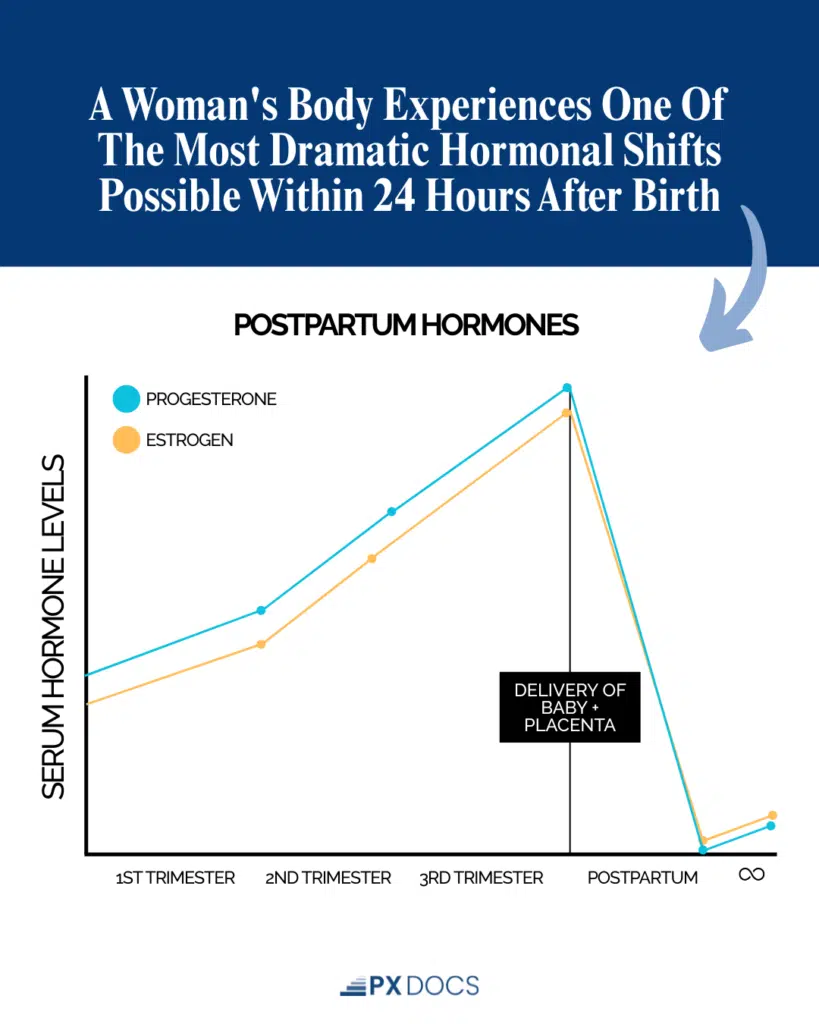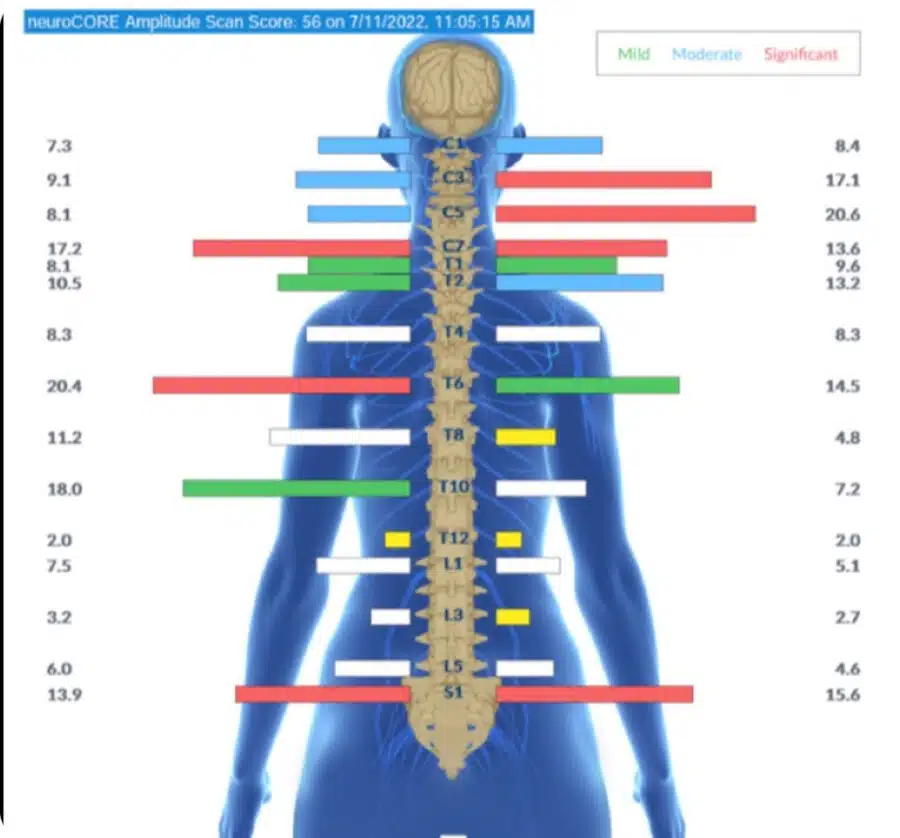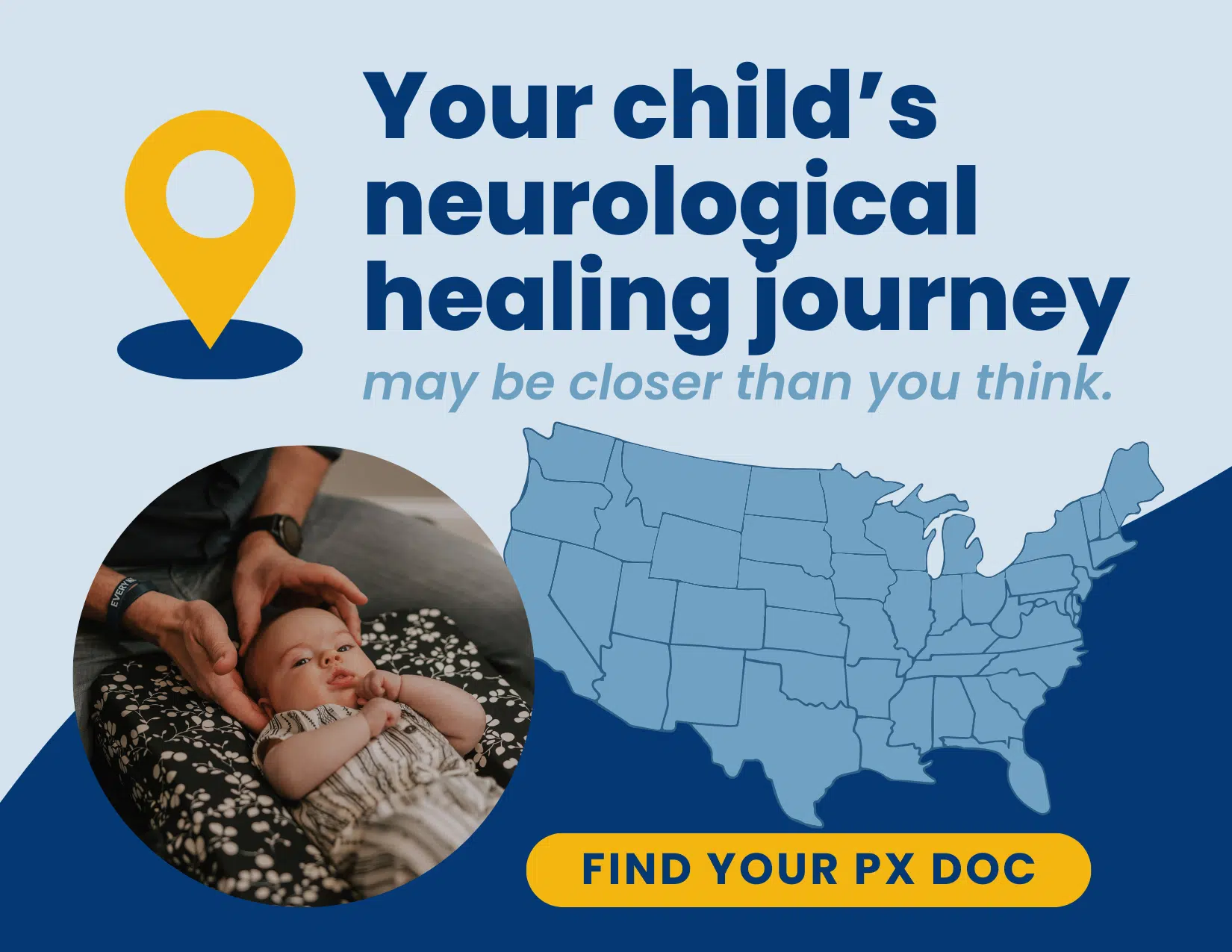While most pregnant mamas spend months preparing for pregnancy and birth, the postpartum period often remains surprisingly overlooked! Despite lasting far longer than labor and delivery, this critical phase receives just a fraction of the attention and support. Why isn’t anyone talking about this phase of life?!
It is estimated that approximately 10-20% of mothers experience postpartum depression (PPD), highlighting its significance as a public health concern.
New mothers typically feel unprepared for the physical and emotional challenges that follow childbirth. Medical care usually focuses on a brief six-week checkup, but the postpartum adjustment period actually lasts much longer—sometimes a full year or more. It really isn’t fair the type of care we receive as postpartum moms. Just a simple 6-week check up?! And don’t get me started on if you had a c-section! Major abdominal surgery just looked over?! It’s not okay!
The reality is that birth is just the beginning. Both mother and baby undergo profound physiological changes during the postpartum period.
What many parents don’t realize is that these challenges often have a common root cause: nervous system dysregulation. The physical trauma of birth can create subluxation (neurological interference) and dysautonomia (nervous system imbalance) in both mother and baby, leading to issues from breastfeeding difficulties and sleep problems, to mood swings and colic.
Neurologically-Focused Chiropractic Care offers a gentle, effective approach to addressing these root causes rather than just managing the signs. By restoring proper nervous system function, it can significantly improve recovery and adaptation for both mother and baby during this critical transition.
What is Postpartum Chiropractic Care and Why Is It So Important?
The postpartum period extends far beyond the conventional medical definition of six weeks after birth. From a neurological perspective, this phase represents an extraordinary transition where both mother and baby’s nervous systems are adapting to insane changes.
For mothers, the nervous system must recalibrate after the intense physical demands of pregnancy and birth, while simultaneously adjusting to dramatic hormonal fluctuations. For babies, the developing neurological system is working overtime to process a flood of new sensory information after leaving the protected environment of the womb.
This neurological recalibration can be significantly disrupted by what we call subluxation—areas of neurological interference where communication between the brain and body is compromised. The physical strain of pregnancy and birth can create tension in the neurospinal system, particularly in the upper neck, pelvis, and low back. These areas of subluxation can alter proprioceptive input (body position awareness) into the brain, creating stress and dysfunction throughout the nervous system.
When subluxation persists, it often leads to dysautonomia—a state of imbalance in the Autonomic Nervous System. The Autonomic Nervous System has two main components: the sympathetic “fight or flight” branch and the parasympathetic “rest, digest, and regulate” branch. During the postpartum period, dysautonomia commonly turns into sympathetic dominance, where the body stays stuck in a heightened stress response. And once stuck in sympathetic dominance for too long, the body becomes exhausted. This can lead to:
- Difficulty relaxing and sleeping, even when exhausted
- Persistent anxiety, irritability, or mood swings
- Digestive problems and constipation
- Challenges with milk production and let-down during breastfeeding
- Heightened pain sensitivity and delayed healing
- Increased inflammation and immune system irregularities
For babies, birth-related subluxation often affects the structures of the upper neck and cranium. When these areas are compromised, it impacts the function of the vagus nerve—the master regulator of the Parasympathetic Nervous System. This can contribute to common newborn challenges such as difficulty latching, colic, reflux, constipation, and irregular sleep patterns. Since a baby’s nervous system is still developing, addressing these issues early is crucial for optimal neurological development.
The Neurological Impact of Birth on Mom and Baby
Birth is truly a marathon—both physically and neurologically—for mother and baby alike. For mothers, labor and delivery demand extraordinary physical exertion, with the body producing complex hormones while experiencing intense pressure, stretching, and sometimes tearing of tissues.
What many don’t realize is that birth is equally demanding for babies. During delivery, a baby experiences significant compression and twisting forces as they navigate the birth canal. The baby’s head must mold to fit through the pelvis, with cranial bones overlapping and the neck often rotating to accommodate passage. Not to mention if their are other forces interfering with baby such as manual assistance, forceps, vacuum, etc. Studies have documented that this process can reach pressures of from 120 to over 500 mmHg on a newborn’s head and neck—an extraordinary amount of force on such small and delicate structures.
These emotional and physical stressors during birth can create subluxation, where communication between the brain and body is compromised. For mothers, subluxation commonly occurs in the:
- Pelvis and sacrum, which can affect recovery, bladder function, and future fertility
- Lumbar spine, contributing to postpartum back pain and core weakness
- Upper cervical spine, impacting the function of the brainstem and vagus nerve
- Thoracic spine, affecting rib motion, breathing, and breast tissue function
For babies, birth-related subluxation most frequently affects the upper cervical spine and cranium, where the vagus nerve and other cranial nerves emerge from the brainstem. When irregular neurodevelopment occurs, it can interfere with vital functions like sucking, swallowing, breathing, and digesting—all essential for a newborn’s transition to life outside the womb. Depending on the birth, we see many babies with subluxations in other areas of their nervous system too.
Birth interventions, while sometimes medically necessary, can significantly increase the risk of subluxation for both mother and baby. Cesarean deliveries involve surgical trauma to the mother’s abdomen and uterus, creating significant strain on the nervous system. Interventions like forceps or vacuum extraction can exert additional force on the baby’s delicate head and neck. Even common interventions like induction, epidurals, and directed pushing can alter the natural biomechanics of birth, potentially increasing stress on both nervous systems.
This birth-related subluxation often becomes the first component of what we at PX Docs call “The Perfect Storm“— stressors that can overwhelm the developing nervous system. When birth trauma creates subluxation and nervous system dysfunction from the very beginning, it sets the stage for challenges that may extend far beyond the immediate postpartum period.
Addressing these neurological imbalances early through Neurologically-Focused Chiropractic Care can help prevent this storm and support optimal recovery and development for both mother and baby.
Postpartum Hormonal Shifts and the Nervous System
The postpartum period brings one of the most dramatic hormonal shifts a woman will ever experience. Within 24 hours of birth, estrogen and progesterone—hormones that are elevated during pregnancy—plummet.
Meanwhile, research shows that prolactin rises to support milk production, and oxytocin fluctuates with breastfeeding and bonding. This abrupt hormonal transformation is often described as “falling off a cliff” hormonally, and it profoundly impacts the nervous system.
What many don’t realize is that these hormones don’t just affect reproductive functions—they directly influence neurotransmitters in the brain and the balance of the Autonomic Nervous System. Estrogen regulates serotonin and dopamine, which are crucial for mood. After birth, the drop in estrogen and progesterone leads to a rapid decrease in serotonin levels. A dysregulated nervous system can be associated with “baby blues” and more severe postpartum mood conditions.

This hormonal flux can significantly be impacted by the Autonomic Nervous System, leading to dysautonomia. When the nervous system becomes dysregulated and created hormonal shifts, it can lead to:
- Difficulty sleeping, even when exhausted
- Anxiety, racing thoughts, or feeling constantly “on edge”
- Heart palpitations or chest tightness
- Temperature regulation issues like night sweats or chills
- Digestive disruptions such as constipation or reflux
- Heightened sensitivity to stimuli like noise, light, or touch
The vagus nerve, the longest cranial nerve and key component of the Parasympathetic Nervous System, is essential for mediating the body’s hormonal responses. It activates “rest, digest, and regulate” functions, promoting calmness, supporting digestion, reducing inflammation, and aiding emotional regulation.
The Mother-Baby Neurological Connection
The connection between mother and baby goes far beyond the emotional bond—it’s a profound neurological relationship where each nervous system directly influences the other. This concept, known as co-regulation, is especially critical during the postpartum period when a baby’s immature nervous system relies heavily on the mother’s more developed system for stability and organization.
A newborn’s Autonomic Nervous System is still developing and lacks the self-regulation capabilities of an adult. Instead, studies indicate that babies depend on close physical contact with their mothers to regulate their heart rate, breathing patterns, body temperature, and stress hormones. This regulation occurs through a remarkable process of physiological synchronization, where the mother’s body literally helps train the baby’s developing systems through skin-to-skin contact, heartbeat, breathing rhythms, and vagal tone.
When a mother’s nervous system is regulated and balanced, her baby tends to settle more easily, feed more effectively, and develop more securely. Conversely, when a mother experiences nervous system dysregulation due to subluxation, stress, or hormonal imbalances, her baby often exhibits signs of distress.
This neurological connection creates both vulnerability and opportunity. If left unaddressed, dysregulation can create a challenging cycle where mother and baby continuously trigger each other’s stress responses. However, when a mother receives Neurologically-Focused Chiropractic Care that improves her nervous system function, the benefits can naturally extend to her baby through this co-regulatory relationship.
Common Postpartum Challenges and Their Neurological Roots
Many postpartum challenges that are typically viewed as separate issues—breastfeeding difficulties, sleep problems, mood conditions, physical recovery complications—actually share common neurological roots. Understanding these connections allows for a more comprehensive approach to postpartum care.
Breastfeeding challenges often have direct ties to nervous system function. The let-down reflex, which releases milk from the breast, depends on optimal Parasympathetic Nervous System activation through the vagus nerve. When a mother experiences subluxation that affects vagal tone, milk transfer may be compromised despite adequate milk production or an overproduction.
Sleep difficulties—a nearly universal postpartum challenge—are deeply connected to Autonomic Nervous System balance. A nervous system stuck in sympathetic dominance (fight-or-flight mode) makes it difficult to relax into deep, restorative sleep, even when exhausted. This can create a frustrating cycle where a mother is desperately tired yet unable to sleep when given the opportunity.
For babies, neurological dysregulation often looks like:
- Shortened naps
- Frequent night waking
- Difficulty transitioning between sleep cycles.
Postpartum mood challenges represent perhaps the most significant intersection of neurological, hormonal, and psychological factors. While traditionally viewed through a purely psychological or hormonal lens, vagus nerve dysfunction—plays a crucial role in these factors.
Physical recovery complications like persistent pelvic pain, incontinence, diastasis recti, and headaches often have neurological components that extend beyond simple tissue healing. Subluxation can disrupt the nerve signals needed for proper muscle engagement, coordination, and pain regulation.
How Neurologically-Focused Chiropractic Care Helps Postpartum
Neurologically-Focused Chiropractic Care offers a unique approach to addressing postpartum challenges by focusing on the root cause—nervous system dysfunction—rather than simply managing the signs and symptoms. This care begins with a comprehensive assessment that includes detailed neurological INSiGHT Scans, which provide objective measurements of Autonomic Nervous System function, stress patterns, and areas of subluxation.
These advanced scans serve as a “window” into the nervous system, allowing doctors to pinpoint exactly where and how subluxation is affecting neurological function. This precise information guides the development of personalized care plans tailored to each mother and baby’s specific needs, rather than using a one-size-fits-all approach.



For mothers, postpartum chiropractic adjustments offer numerous benefits:
- Restoring proper pelvic function after the physical demands of pregnancy and birth
- Reducing neurotension in the upper cervical spine to improve vagus nerve function and parasympathetic tone
- Enhancing nervous system communication to support hormone balance and regulation
- Improving sleep quality and duration through better autonomic balance
- Supporting proper muscle engagement for core recovery and reduced back pain
- Promoting optimal breast tissue drainage and nerve supply for breastfeeding
- Support co-regulation
For babies, gentle pediatric adjustments can help:
- Release neurotension in the upper neck and cranium from the birth process
- Improve cranial nerve function for better sucking, swallowing, and breathing coordination
- Enhance vagus nerve function for improved digestion and colic prevention
- Support proper head shape development and potentially avoid torticollis and plagiocephaly
- Establish balanced nervous system patterns during this critical developmental window
For babies especially, the pressure of an adjustment is often compared to testing the ripeness of a tomato—light and precise. These adjustments work by stimulating specific neurological receptors, providing the brain with updated information that allows it to reestablish proper regulation and function.
Honoring Your Postpartum Journey Through Neurological Support
The postpartum period is not just a brief phase to “get through”—it’s a profound neurological, physical, and emotional transition that deserves dedicated support and care. By understanding the central role of the nervous system in this journey, mothers can make informed choices that support optimal recovery and development for both themselves and their babies.
Neurologically-Focused Chiropractic Care offers a unique and valuable approach to navigating the postpartum period by addressing the root causes of common challenges rather than just managing traits. By restoring proper neurological function through gentle, specific adjustments, this care can help create a foundation of balance and regulation that supports healing, bonding, and thriving during this critical time.
If you’re preparing for birth or currently in the postpartum period, consider incorporating Neurologically-Focused Chiropractic Care into your support plan. Visit the PX Docs Directory to find a qualified provider near you.





